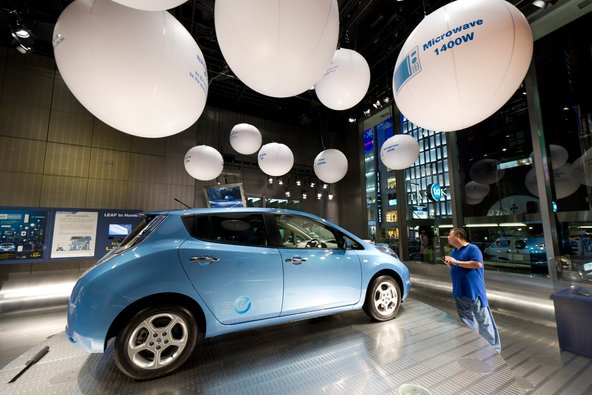Zonal Architecture for Vehicles
Zonal architecture is the name given for the new structure of vehicle electronics. In contrast to a traditional vehicle in which systems are grouped by function, zonal architecture offers a more efficient solution. The functions within a vehicle are grouped by location into several zones. Each zone is responsible for the devices that are installed in a particular section of the vehicle and are connected to a locally installed zonal controller or gateway. Because a zonal gateway is close to the devices it controls, the cable lengths required to connect them are relatively short.
Each zonal gateway is connected to the central computing cluster at the heart of the vehicle. The communication between zonal gateways and the central computer will be more like that of a computer network rather than an automotive harness and will use small, high-speed networking cables that greatly reduce both the quantity and size of the harness that must be installed around the vehicle.
In this new configuration, the conventional automotive harness system that resembles the human nervous system is replaced by a far simpler scheme. Each function within the vehicle will be grouped into a small number of zones, each of which will then communicate with a central computing cluster. The resulting architecture has more in common with an ethernet network than a vehicle harness and will replace a huge amount of conventional copper cabling with a few high-speed links.
The new architecture represents one of the largest changes in automotive technology in decades, potentially larger than the current trend toward electric power. Zonal architecture will require fewer connectors and less wiring. The weight saving that these changes will bring provides a huge boost in the performance of the latest electric vehicles. The reduced number of connection points will also mean that there are fewer potential points of failure.
Although the move to zonal architecture will be led by software, the physical structure will play a huge part in making this concept a reality for manufacturers. Easier assembly, reduced weight and advanced modularity are just a few of the advantages that a zonal structure will bring to the task of building tomorrow’s vehicles. Connectors will be critical to these designs and will need to deliver both high power and high speed in this new automotive environment.
Automotive Connectors
Connectors perform a vital role in the signal path of these new high-speed systems and so the correct choice of connector will be vital for this new generation of highly digitised vehicle. However, the especially challenging off-road environment will mean that it is not sufficient simply to choose the current breed of high-speed connector, as it will not be able to provide the reliability demanded by these tough conditions.
Bulgin has developed a range of solutions that go beyond traditional automotive connectors to deliver high performance for designers. The Buccaneer circular family is designed to provide highly reliable connectivity solutions for applications in harsh environments. Manufactured from robust plastic and sealed against water and dust ingress, the Buccaneer family is a compact connector suitable for a range of applications in the automotive industry.
The use of miniaturised components within vehicles means that the 400 series Buccaneer connector is an ideal solution where small size and lightweight are important. Available in a range of options between 2 and 12 poles, in a housing with a diameter of just over 19mm, the 400 Series offers IP68 and IP69K protection against the elements.
With the increased digitisation of the modern vehicle, USB and Ethernet connections are becoming more common in automotive applications. The standard series Buccaneer is available with USB or Ethernet interfaces, making integration with existing equipment easy whilst still providing the high level of environmental protection required for the off-road environment.
Conclusion
The off-road industrial environment remains one of the most challenging for designers. Components need to withstand harsh conditions while providing almost unequalled levels of reliability. At the same time, operators are expecting ever-increasing levels of functionality. Choosing connectors for these applications requires a deep understanding of how the conditions will affect their performance. Make sure your design is ready for the challenges it will face.






